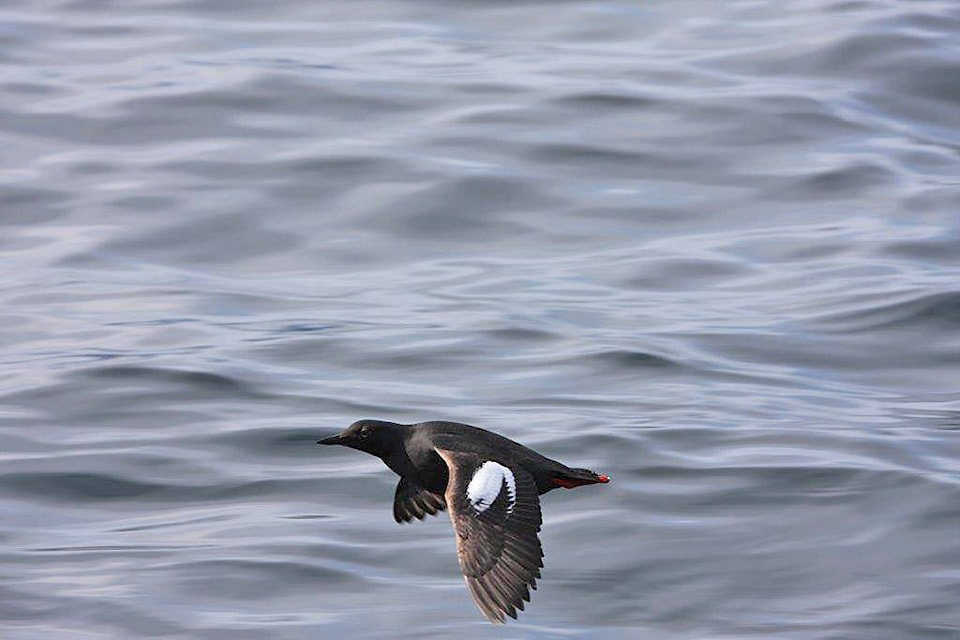Everything is on the move
The Pigeon Guillemots are on territory again. Their small, bright red feet paddle through the water beside the dock and their whistles call to one another from the inlet waters. They return every year to their nesting site, Masset Wharf, keeping to their habit of utilizing man-made structures built over deep waters. Just so is Masset Inlet with its abundance of food and ever-changing tides. The guillemots also nest on the small, uninhabited islets that dot the ‘lake’ where the inlet widens and deepens.
We spent a few days scouting the lake area a few years ago during the Breeding Bird Atlas years. Although we didn’t go ashore, it was exciting to see guillemot and oystercatcher chicks running on the weedy rocks. The parent birds were ever on the alert and stayed close to the young birds, especially as the chicks had only tiny, stubby wings and were still covered in down. It would be another month or so before they could fly. The islets are isolated, therefore somewhat protected, but a marauding mammal would make short work of the lot if it managed to swim that far. The islets are some of the few undisturbed places where the wild world gets by on its own.
One of the sad things about the removal of the old wharf at Shingle Bay in Sandspit was the removal of the Pigeon Guillemot ‘colony’ that had grown up under the deck. The birds had nested there for almost as long as the wharf had stood and returned year after year. Now a little group of guillemots swim in the open water around the area. They have lost their place in the world and a whole nesting season. The colony will probably die away, generations of chicks have ‘bonded’ with the place and don’t know any other. They are small, friendly birds that do no harm to anyone, and of course, were not consulted about whether or not their home should be destroyed. An apparently laughable concept, but, if we listened to the elders, everything that lived in, around or near our homes were all people to be respected.
As we bend to work at the kitchen table a flash of movement outside catches our eye. Something scoots low across the grass and disappears into the cotoneaster bush. We wait. Then a Pacific-slope Flycatcher darts into the pond below the bush, takes a sip and flits back up. It never sits still but flicks its wings and tail, shakes and preens and darts again, constantly on the move, constantly alert and then it’s gone. Then a hummingbird arrives. This tiny, feisty bird also stays low and lands by the feeder to take a sip. It’s all very low-key. Birds can be like that before they die away.
Haida Gwaii Observer
Newsroom
Send email
Like the Haida Gwaii Observer on Facebook
Follow us on Twitter
